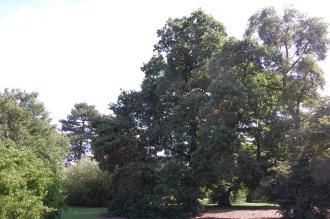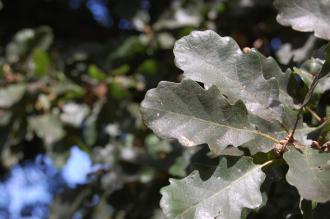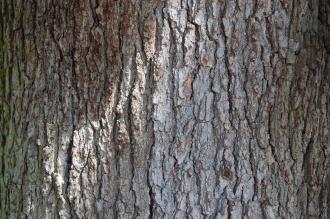
Quercus pubescens (15/08/2015, Kew Gardens, London)
Position: Full sun to partial shade
Flowering period: Spring
Soil: well drained
Eventual Height: 20m
Eventual Spread: 20m
Hardiness: 4a, 4b, 5a, 5b, 6a, 6b, 7a, 7b, 8a, 8b
Family: Fagaceae
Quercus pubescens is a deciduous tree with a rounded to broadly spreading habit. Its blue/ green leaves are hairy when young, ovate and deeply lobed, up to 13cm long and 6cm broad. Its leaves turn red/ bronze in autumn before they fall. Its grey/ brown bark is deeply fissured, forming small plates. Its trunk may achieve a diameter of up to 2m. Its green flowers are dioecious, the male appearing as catkins and the female appearing solitary. Its green fruit is an ellipsoid acorn which is up to 20mm long , these mature to a pale brown. Its roots are shallow and fibrous as well as having a tap root.

Quercus pubescens Leaf (15/08/2015, Kew Gardens, London)
Quercus pubescens, commonly known as the Downy Oak or Pubescent Oak, is native to southern Europe and western Asia. In its native habitat it grows in dry hills and mixed woodland. Quercus pubescens is synonymous with Quercus lanuginosa.
The etymological root of the binomial name Quercus is derived from the Latin name for an Oak tree, but some authorities believe it to be derived from the Celtic quer meaning ‘fine’ and cuez meaning ‘a tree’. Pubescens is derived from the Latin meaning ‘downy’ or ‘soft’.
The landscape architect may find Quercus pubescens useful as a specimen tree with attractive autumn leaf color. This species is highly tolerant of hot, dry summer conditions and is drought tolerant once established.

Quercus pubescens Bark (15/08/2015, Kew Gardens, London)
Ecologically, Quercus pubescens acorns are attractive to some birds and mammals.
Quercus pubescens prefers moist, fertile, well-drained soils. It prefers a neutral to alkaline pH of soil. This tree will tolerate heavy clay and acidic soils.
Quercus pubescens requires little maintenance.

Landscape Architecture

